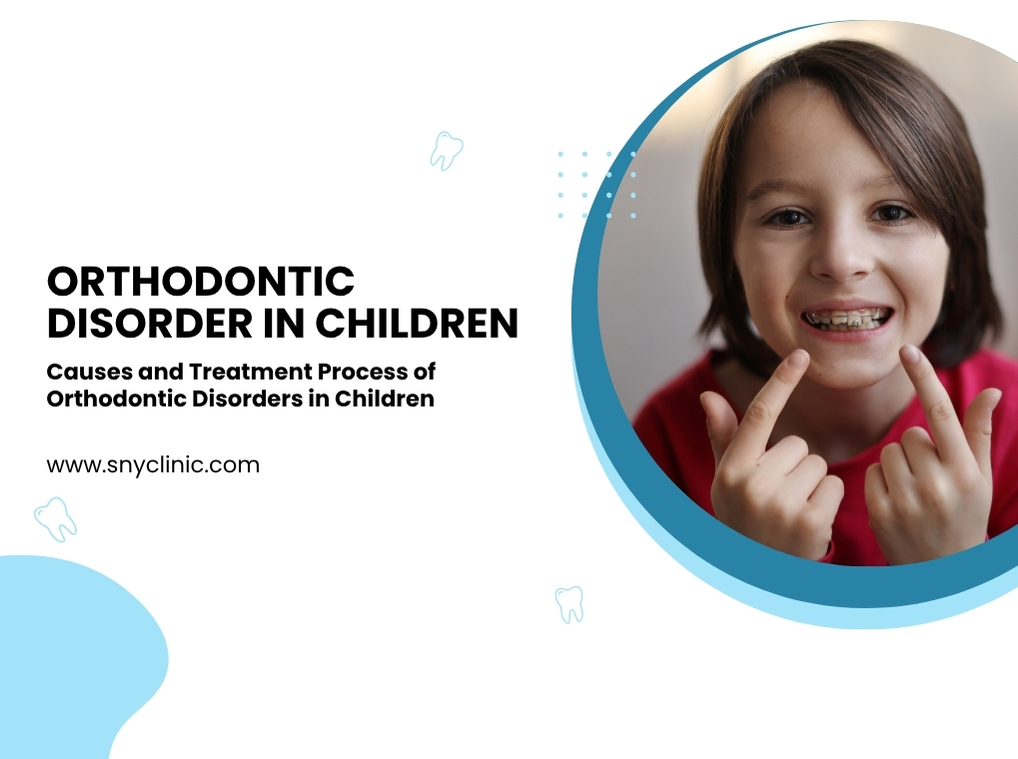
Causes of Orthodontic Disorders in Children and the Treatment Process
Causes of Orthodontic Disorders in Children and the Treatment Process
Causes of Orthodontic Disorders in Children and the Treatment Process
Childhood is a period of intense physical and dental development. During this growth phase, some children may experience noticeable misalignments in their teeth or jaw structure. These conditions are referred to as orthodontic disorders. So, what causes orthodontic problems in children? How can they be recognized and treated effectively? You’ll find all the answers in this article.
What Is an Orthodontic Disorder?
An orthodontic disorder refers to deviations in the natural alignment of the teeth and jaws. Examples include crooked, spaced, or overlapping teeth, or improper fit between the upper and lower jaws. If not treated in time, these issues can lead to both aesthetic and functional problems.
Main Causes of Orthodontic Problems in Children
1. Genetic Inheritance
Some children may inherit jaw narrowing, missing teeth, or abnormally large teeth. If similar orthodontic issues exist in the family, the likelihood of the child experiencing them increases significantly. Genetic factors play a key role in shaping jaw structure and tooth alignment.
2. Prolonged Thumb Sucking and Pacifier Use
While thumb sucking and pacifier use are normal in infancy, if they continue beyond age 3, they can negatively affect oral and dental development. These habits can cause teeth to protrude, deform the palate, and create jaw alignment issues.
3. Mouth Breathing Habit
Children who consistently breathe through their mouths instead of their noses may develop a narrow upper jaw and experience bite problems.
4. Premature Loss of Baby Teeth
Baby teeth act as guides for the permanent teeth underneath. Early loss of baby teeth can lead to misaligned eruption of permanent teeth.
5. Trauma and Injuries
Strong impacts or falls that affect the jaw area can cause tooth misalignment. Such trauma can also result in jaw asymmetry or developmental imbalances.
Early Signs of Orthodontic Issues
Parents should be attentive to the following warning signs:
- Improper alignment of the upper and lower teeth
- Protruding or receding upper or lower jaw
- Excessive spacing or crowding of teeth
- Frequent mouth breathing
- Difficulty pronouncing certain sounds
- Trouble chewing or discomfort while eating
If any of these symptoms are observed, consulting an orthodontist without delay enables early diagnosis and a more effective and shorter treatment process.
When Should a Child See an Orthodontist?
Experts recommend that children have their first orthodontic evaluation by age 7 at the latest. At this age, both baby and permanent teeth are present, allowing for early intervention and prevention of more severe issues later.
Orthodontic Treatment Options
1. Preventive and Interceptive Measures
Detected during childhood, jaw narrowing and harmful habits can be managed using removable orthodontic appliances before development is complete, preventing future problems.
2. Fixed Orthodontic Appliances (Braces)
Typically applied between ages 11–13 when all permanent teeth are in place, braces are highly effective in aligning teeth correctly. This method is one of the most common and successful treatment approaches.
3. Clear Aligners (Aligners)
Preferred by children or teens concerned about aesthetics, this method uses invisible clear trays. They are easy to use and can achieve the desired results efficiently.
The Family's Role During Treatment
Orthodontic treatment is not solely the dentist’s responsibility—it also requires family support. Parents should ensure that the child complies with appliance usage, maintains good oral hygiene, and attends regular checkups. Parental involvement is also essential in helping children break habits such as thumb sucking, nail biting, and pen chewing.
What Happens If Treatment Is Delayed?
If orthodontic disorders are not addressed early, they may cause a range of problems affecting oral health and daily life in the future:
- Increased risk of tooth decay
- Gum diseases
- Jaw pain and joint problems
- Difficulty swallowing, chewing, or speaking
- Aesthetic concerns and lack of self-confidence
To prevent these issues, early diagnosis and proper treatment are vital.
Healthy Smiles Begin with Early Intervention
Timely orthodontic evaluations during childhood help prevent future structural issues. Treatments initiated during the correct developmental stage support children in achieving both a healthy mouth and growing up with self-confidence, free of aesthetic concerns. Remember, a balanced and healthy smile plays a significant role in a child’s development into a confident individual.




